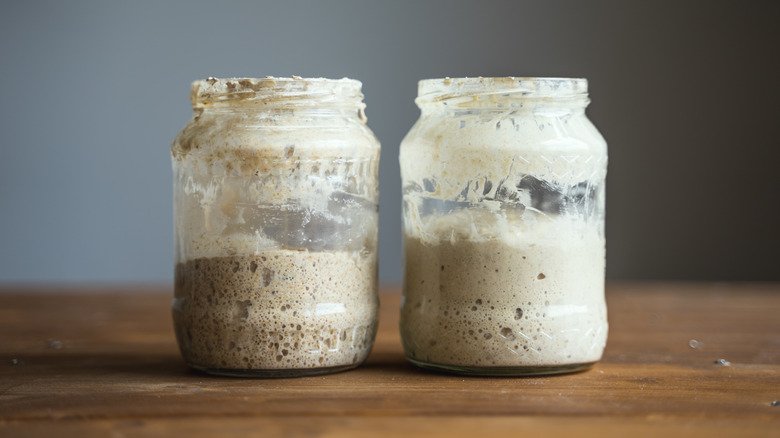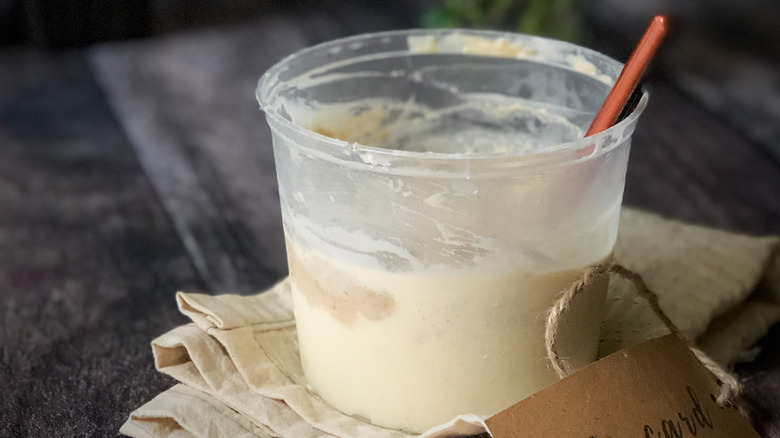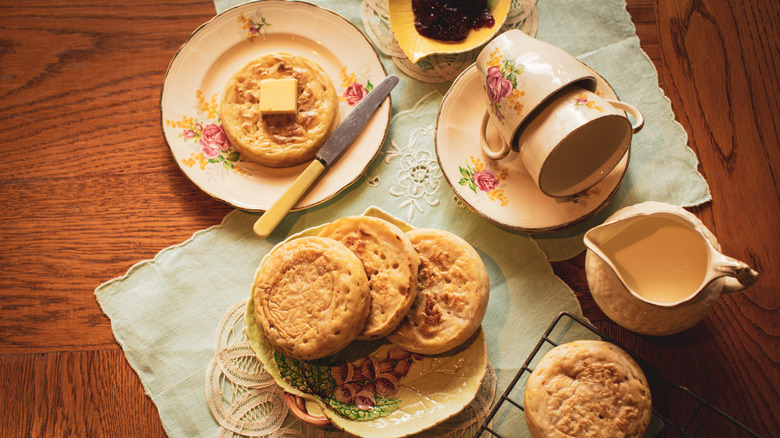What Is Sourdough Starter Discard, And Why Should You Keep It?
Sourdough is a delicious, hearty, chewy, bread that has marvelous depth of flavor. It's sour, sweet, and savory all at the same time. This type of bread is made with a sourdough starter that's a combination of flour, water, yeast, and bacteria. It ferments in the fridge for hours, days, weeks, months, and sometimes years.
Sourdough starter develops particular characteristics as it grows and changes, depending on where you live. San Fransisco sourdough, arguably the world's most famous kind, contains a special strain of yeast, called Lactobacillus sanfranciscensis, that isn't found anywhere else on the planet. The bacteria produces byproducts as it grows, including lactic acid, that give that sourdough its tang. (If you don't live in the Bay area, your starter will have different bacteria but will be almost as delicious.)
Sourdough starter has to be maintained because the yeast needs a consistent supply of food from the flour to keep growing. If you don't use the starter regularly, you must feed it, producing something called sourdough discard.
Why not discard the discard?
When you revive a sourdough starter that hasn't been used in a while or refresh it without baking something, you remove part of the mixture and add more water and flour to the smaller amount so the yeast can grow and start to work again. Most instructions for refreshing starter tell you to throw away the mixture you removed, called sourdough discard. But MasterClass disagrees.
While you can't use the discard to leaven the recipe, the discard is full of wonderful flavor from the lactic acid and other byproducts the bacteria and yeast produce. You can scoop the discard out, put it in a separate jar or container, and store it in the fridge up to two weeks. (The discard won't be bubbly because the yeast is no longer active.)
Of course, sometimes the starter can't be saved. If there's any mold on it, you must throw it all away and start over. That goes for the discard, too. And if you see any pink or orange color, throw it all away. Some mold and bacteria can produce toxins as they grow that aren't destroyed by heat, so even if you bake the bread or pancakes or pretzels thoroughly, those toxins can still make you sick.
Use that wonderful sourdough discard
Think of sourdough discard as a flavoring, the same way you would lemon juice or orange zest or mustard. There are recipes for banana bread, biscuits, scones, waffles, English muffins, naan, and even brownies and chocolate chip cookies that use sourdough discard. You can use sourdough discard in any recipe that has another source of leavening, as long as you think it could use some tang.
The Washington Post says that you can use eggs or baking soda as leaveners with the discard. The outlet also offers tips on replacing the liquid used in any dough with sourdough discard; it's not one-to-one as you may think.
King Arthur Flour has recipes for sourdough crumpets, which are like softer, spongier English muffins with lots of holes to hold melted butter. Sourdough scones are another delicious pastry option. And sourdough pasta? Why not? The possibilities are endless.


